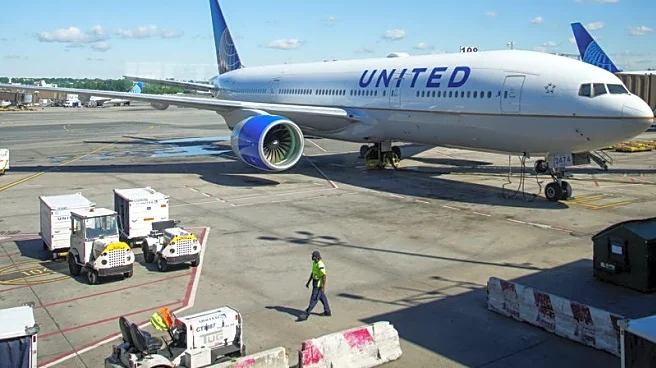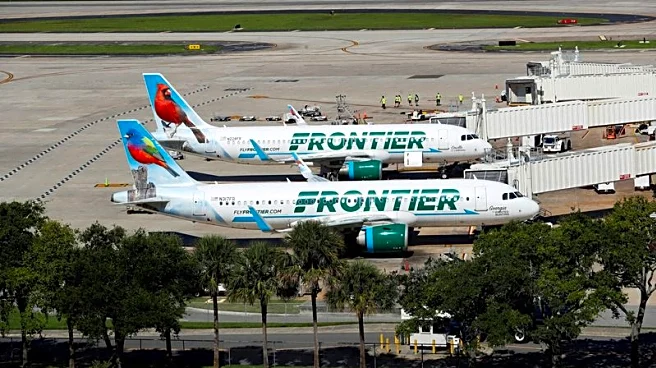What's Happening?
JetBlue Airways has updated its financial guidance for the third quarter, citing strong demand, lower jet fuel prices, and improved operational performance. The airline reports that demand remained robust through the peak summer travel period, with consumers making more close-in bookings. JetBlue's operational performance in August, which was previously affected by disruptive weather events, has improved, boosting expectations for the quarter. The airline now anticipates passenger capacity to be flat-to-up-1% year on year and has adjusted its revenue per available seat kilometer (RASK) forecast. Additionally, JetBlue has lowered its expected average fuel price range, further improving projected operating expenses.
Why It's Important?
JetBlue's positive outlook for the third quarter reflects the airline's ability to adapt to market conditions and capitalize on strong demand. The reduction in fuel costs is a significant factor in improving the airline's financial performance, as fuel expenses are a major component of operating costs. JetBlue's focus on operational efficiency and capacity management positions it well for long-term growth. The airline's collaboration with United Airlines through the 'Blue Skies' interline agreement is expected to contribute to its financial turnaround plan, highlighting the importance of strategic partnerships in the aviation industry.
What's Next?
JetBlue anticipates entering a new period of long-term growth starting next year, fueled by improved aircraft availability and the resolution of Pratt & Whitney engine durability issues. The airline expects its fleet of Airbus A320neo-family aircraft to return to full strength by the end of 2027. The 'Blue Skies' agreement with United Airlines is projected to contribute $50 million annually through 2027, supporting JetBlue's financial turnaround plan. The airline's focus on strategic growth and operational efficiency will be key to navigating future challenges and opportunities in the aviation sector.












